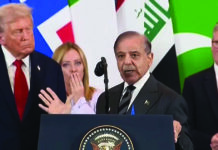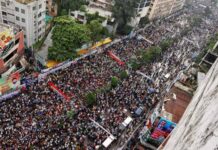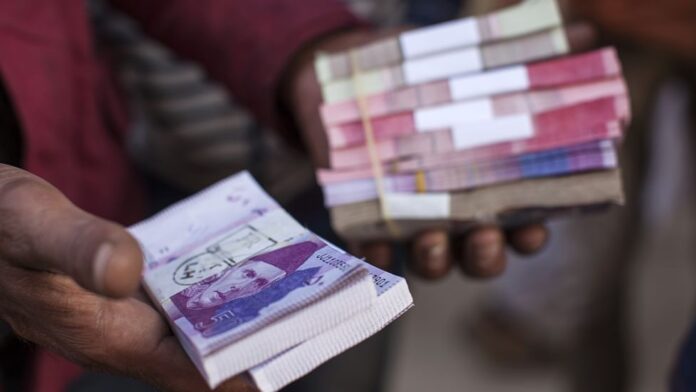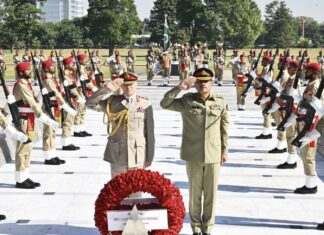Pakistan has witnessed the highest trade deficit amounting to $24.78 billion from July 2021 to December 2021. The dollar was at Rs 158 on 1st July, whereas, on 31 December it was trading at Rs 178. Yet, the current account deficit even with the adequate support of good remittances from overseas Pakistanis is $9.09 billion from July 2021 to December 2021.
Projecting these numbers for the remaining 6 months, a current account deficit of $17 to $19 billion in FY 22 is forthcoming. Which means, we are driven back to square one the scenario painted by the incumbent government itself when the Pakistan Muslim League Nawaz (PML-N) left the CAD at $19 billion in 2018. This has been their foremost contention that due to the current account deficit, the economy was in a mess. Nevertheless, the PTI in its fourth year, hoist by its own petard, has brought the CAD to the same turn, with many other crumbling economic indicators.
Adding to this stress, the budgeted repayments of external debt including principal and interest were reasonably estimated to the tune of $12.4 billion for the current financial year 2022. A Bulk of this amount, $8.638 billion, has to be paid back in the current half of this financial year January-June 2022. Hence, if the government wants to keep the reserves at the present level and to keep the Rupee Dollar parity at Rs 178 per dollar, it will have to raise almost $16 to $17 billion to cover CAD and debt repayments in the upcoming few months for this financial year.
Any political adventure should be meticulously planned, considering all the challenges faced by the economy and the people of Pakistan. People are desperate for relief; any further deterioration by a political move will result in blame being shifted from the current government to the opposition. It is anybody’s guess where the dollar will stand in the transition period in case of a political adventure leading to further inflation
This, in itself, is a herculean task considering the IMF review is still pending amid failure to cut spending. With each passing day, the economic pressure is building up on the reserves and the exchange rate. These dollars are to be raised through the IMF, ADB, World Bank, and by floating bonds in the international market. Any shortfall in this target will result in falling of the reserves or else devaluation of the rupee. In such a case, it will further exacerbate the high inflation trend where CPI inflation was at 12.5 % in December.
A short while ago, the mini-budget was passed with withdrawal of tax exemptions to the tune of Rs 350 billion. This withdrawal will inevitably push up inflationary pressures. Furthermore, rising international petroleum prices and an additional pressure of taking the levy on petrol up to Rs 30 to achieve the target of Rs 610 billion, increasing prices of electricity, are all adding to the inflationary trend. With an additional burden of inflation through devaluation of the rupee leading to expensive imports, the result could be devastating for the middle class and people living on minimum wages who are already in crisis and unable to make a livable monthly budget on their current salaries.
On the political side, the opposition is talking about in-house change or general elections. In case of a possible in-house change, the process could take weeks to a couple of months for the new government and more importantly a new Finance Minister to settle into his office. A new government will have to go to the IMF again to assure it that the programme is carried smoothly. And if it becomes able to renegotiate some terms, the process of doing so will lead to the delays on raising required dollars, which will result in rupee devaluation or depletion of the reserves.
In case the country goes to dissolution of assemblies and general election, a caretaker government will have to come in place with limited financial powers leading to the similar scenarios of rupee devaluation. The requirement or shortfall of the dollar is a massive challenge on its own for the sitting Government or more so for the opposition who is eyeing a political adventure. The reserves which act as a buffer are not enough to hold the rupee-dollar parity, given the debt repayments and the projected current account deficit. Macro stability is currently the main challenge facing the economy of Pakistan.
If the rupee is further devalued, the purchasing power of the consumer will further fall due to rising costs of imported items which are a major portion of our GDP. Instability of the currency in the past few years and the upcoming months have caused uncertainty in the business environment. Continuous massive inflation has depleted the purchasing power of the common man, forcing him or her to reduce expenditure on anything beyond necessities.
Any political adventure should be meticulously planned, considering all the challenges faced by the economy and the people of Pakistan. People are desperate for relief; any further deterioration by a political move will result in blame being shifted from the current government to the opposition. It is anybody’s guess where the dollar will stand in the transition period in case of a political adventure leading to further inflation.























